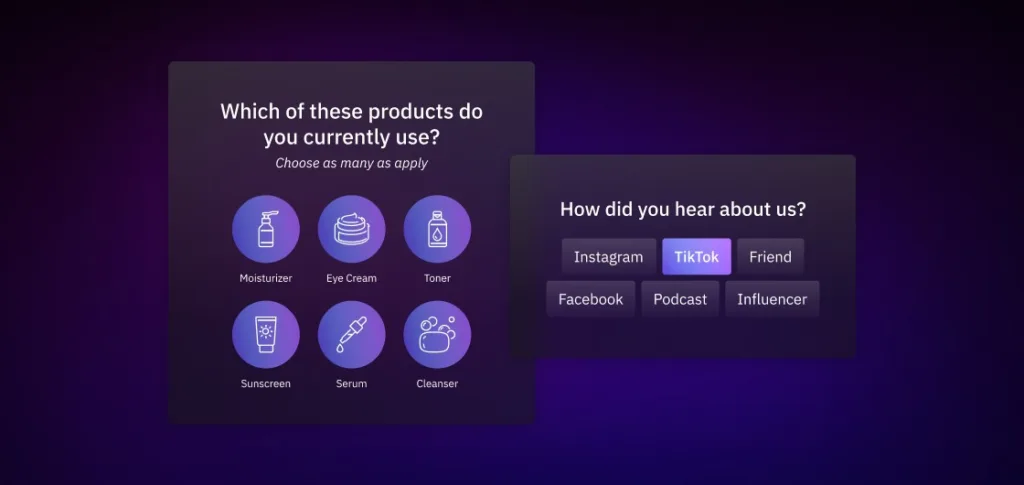
- Customer Marketing
- Quizzes
- Superfans
- Surveys
Surveys vs. Quizzes: How to Use Both in a Unified Customer Marketing Strategy
Megan Wenzl | Jan 30, 2024
Mar 21, 2023 | 8 minute read
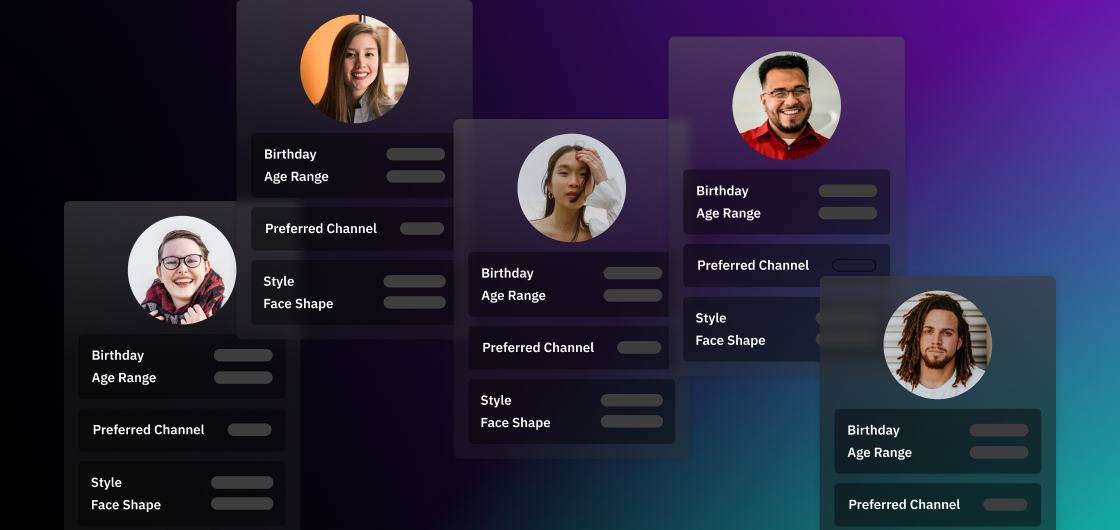
Lindsay Kolinsky
Director of Marketing
Online shopping’s explosion in popularity, and the emergence of an ecommerce industry that’s packed with competition, has ratcheted up the pressure on Shopify brands to deliver truly personalized customer experiences.
In fact, according to our own data, 79% of consumers today say that personalized shopping experiences in the form of product recommendations, personalized communication, and relevant offers are an important component of their shopping experience. This includes 1-in-5 who label it as “very important”.
But there’s a false belief among many ecommerce brands that segmentation is the same as personalization. That’s not the case.
Segmentation, for example, involves categorizing and dividing customers based on similar attributes (age, location, shopping behavior, etc.). It allows you to identify certain cohorts within your broader customer base who share the same preferences and characteristics.
Personalization, on the other hand, focuses on the specific customer. It empowers you to optimize the experiences and messages you deliver to your individual customers — not the group they belong to — so that you can delight them and keep them coming back for more.
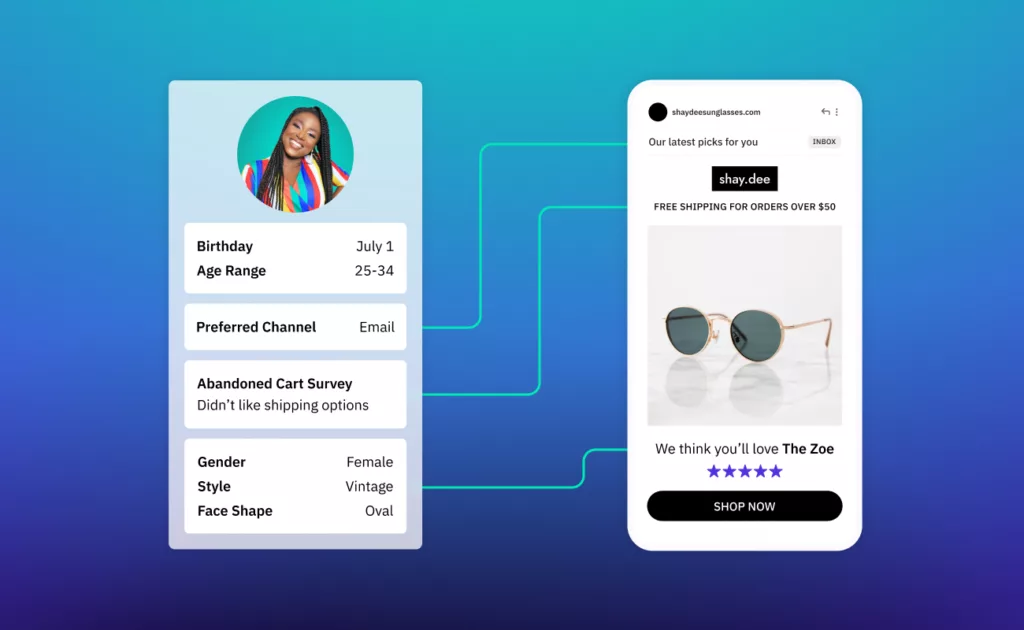
There’s one thing personalization and segmentation have in common, however. That is: their reliance on customer data. The reality is, you can’t deliver a bespoke customer experience if you don’t have access to relevant customer data. Which also means that you can’t produce those memorable, loyalty-building experiences that your customers crave, without an effective data collection program.
In this blog, we’ll outline the ways you can scale your data collection strategy and use it to deliver successful and personalized customer experiences. First, though, let’s take a look at the most common types of customer data you can collect.
There are four main types of customer data you can collect to personalize the ecommerce experience. These are:
There are three main reasons why ZPD is your best source for personalization:
As Andrew Christison, Co-founder at Retencity, says, “When brands don’t track data, don’t ask questions, and don’t continuously gain insights from their customers, it’s impossible to maximize the efficiency of marketing efforts.
“That’s why we’re so impacted as consumers when we know brands are talking to us as if they know who we are and what we want, because they do. Every brand can collect relevant data consumers are happy to divulge in exchange for us, as marketers, to give them a world-class experience.”
Fortunately, it’s becoming increasingly easy for Shopify brands to collect the sort of high-value customer data that’s needed for effective marketing personalization, such as identity, preference, behavior and intent data, directly from the customer.
Let’s take a closer look at three particularly effective collection tools.
Customer reviews are an incredibly effective way to capture zero-party data, however it’s important for brands to optimize the review process in order to maximize both the volume and variety of data points being collected.
For example, adding customer attributes to your review template allows customers to submit more specific information related to their needs, preferences, and how they intend to use your products. This will help you to target them with advertising, promotions, or other messaging based on their specific characteristics.
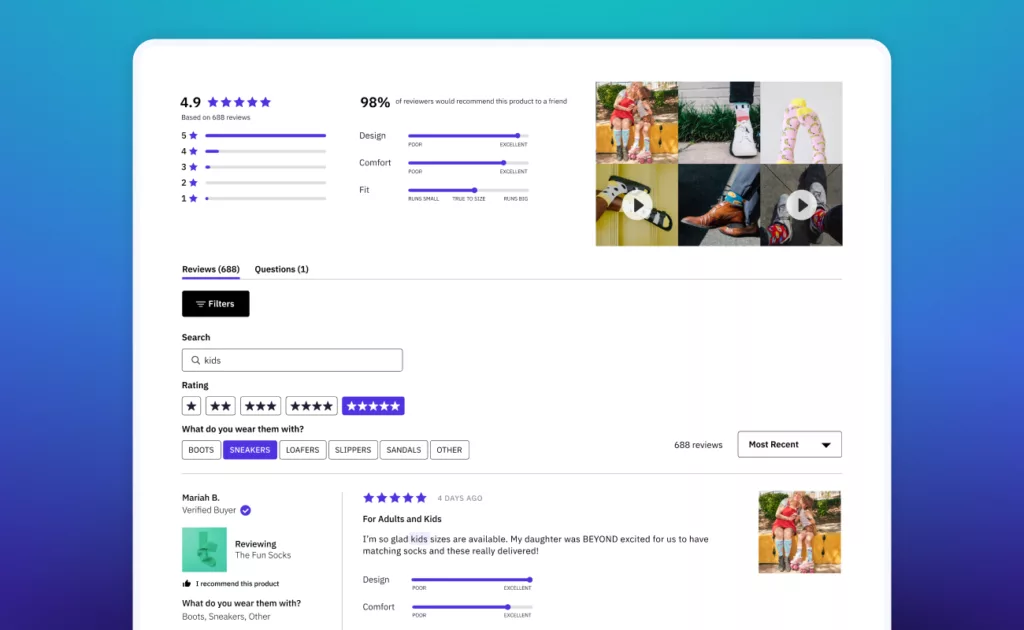
Moreover, brands may choose to offer rewards or discounts to customers willing to submit photo or video content along with their reviews. Maximizing the collection of attributes and UGC during the review process not only greatly enhances your ability to deliver personalized interactions, but also allows you to display information that may help build trust and inform the purchasing decisions of new customers.
Similarly, brands can learn a great deal about their customers and improve personalization through the use of surveys. For example, if you wanted to learn more about a customer’s features or characteristics, or simply uncover how likely they are to make additional purchases, you can make these questions the focus of a post-purchase micro-survey integrated at checkout, or with a shareable link delivered via email or SMS.
However, in order to maximize engagement and collect as much information as possible, it’s important to ensure that the questions being asked are both relevant to the customer and presented at the right moment in their journey.
Although this might seem like a complicated task, solutions like Okendo Surveys greatly simplify the process through the use of contextual targeting, which applies conditional filters that automatically dictate how often, at which touchpoints, and to whom post-purchase surveys are presented.
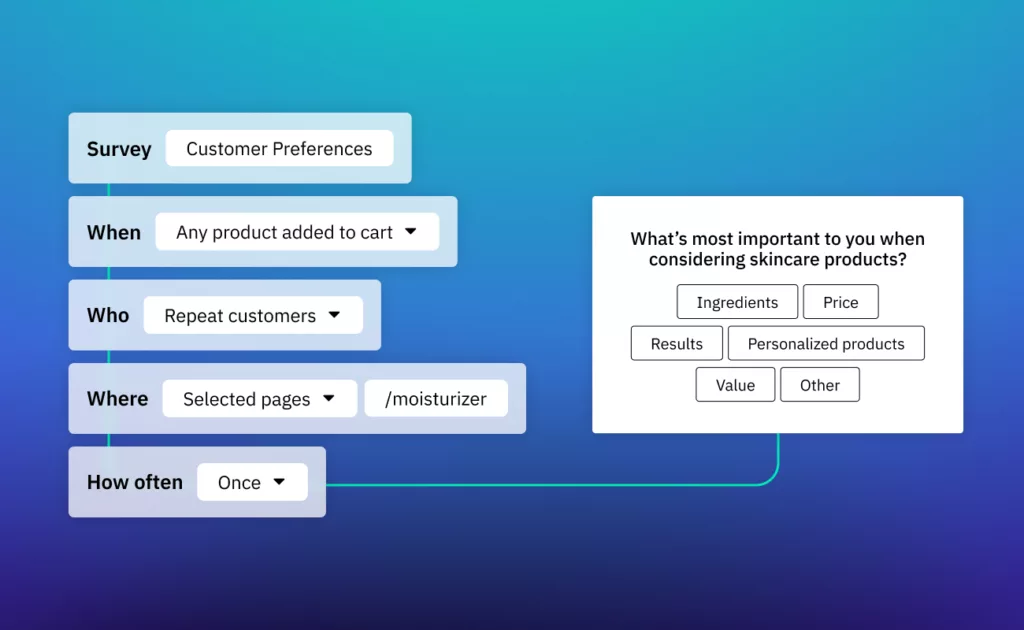
And while surveys are a tried and tested method of collecting ZPD, there are other similar methods you can use to collect it, including quizzes. Just like surveys, quizzes can help you gather valuable insights in contextual and even fun ways.
By helping to understand each individual customer’s needs with quizzes, brands can continuously add data to customer profiles.
When you ask customers the right questions to understand their preferences, requirements, behaviors, and demographics, you’ll get the zero-party data you need to enrich your customer profiles and get even more detailed and personalized when sending product recommendations. The data you collect can then also be used to further personalize marketing campaigns.
For example, an apparel brand might ask customers, What workout activity do you enjoy doing the most? Answer options might include, running, weight training, hiking, yoga, tennis, etc., and then the brand can use that information to personalize email communications to that specific customer.
Indeed, Shopify brands have a huge opportunity to take advantage of their shoppers’ desire for personalization to set themselves apart from competition, build loyalty, and drive revenue. It’s important to realize, however, that every personalization strategy is dependent on your customer data collection processes.
“With third-party data and ad signals greatly reduced by privacy restrictions, we continue to encourage our DTC clients to focus on capturing more zero-party data in 2023”, says Jonathan Gosper, Partner and COO at Evestar. “Key insights from customer reviews and segmented post-purchase surveys have helped take a lot of the guessing out of product development and marketing budget allocations, two crucial areas for brands seeking healthier business profitability.”
This means both maximizing the collection of zero-party data through reviews, surveys and quizzes, as well as leveraging these insights beyond mere segmentation. By truly engaging with customers on a 1:1 level, you don’t only increase your ability to optimize marketing spend and drive up conversions and order values, but also foster the kind of loyalty and affinity for your brand that can last a lifetime.
Related articles
Ready to learn more?